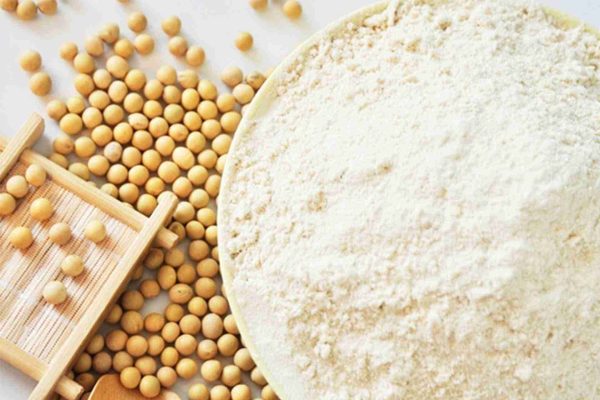
1. Acid precipitation and alkali extraction method.
This is a traditional separation and extraction method. This method utilizes the characteristic that most proteins in soybeans precipitate at the isoelectric point (pH 415) to separate them from other components. The precipitated proteins are dissolved after adjusting the pH, so it is called acid precipitation and alkali extraction. The disadvantages of acid precipitation and alkali extraction are: large acid and alkali consumption, high wastewater treatment costs, and low product yield. This separation and extraction method needs to be improved. But it is still the basic method of industrial production.
2. Membrane separation method.
According to the molecular weight and shape of soybean protein and the adaptability of the membrane to soybean protein, membrane materials and membranes with different molecular weight cutoffs are selected. The soybean protein extract is separated by ultrafiltration and purified by ultrafiltration to eliminate non-cutoff components and meet the standards. The separated soy protein liquid is then ultrafiltrated and concentrated to the required concentration, then discharged and spray-dried into powdered soy protein isolate.
3. Reverse micelle extraction and separation method.
Reverse micelles are an aggregate formed by surfactants in organic solvents. The non-polar tail of the surfactant is outside and contacts the organic solvent. The polar head is inside to form a polar core. The core has the ability to contain an aqueous solution. And the ability to dissolve proteins, so this organic solvent containing reverse micelles can be used to extract proteins from the aqueous phase. Using reverse micelle technology to extract soy protein from full-fat soy flour, about 50% can be extracted at one time. The soy protein extraction process is very fast, and it is more reasonable to use a non-diffusion model to explain it.
The main instruments required by this method are: automatic moisture analyzer, gas bath constant temperature oscillator, centrifuge, Kjeldahl nitrogen analyzer, analytical balance, constant temperature magnetic stirrer and micro-injection rod, etc.
The main factors that affect the reverse micelle extraction process include the type and concentration of surfactant, pH value of the aqueous phase, ionic strength, temperature, etc.
4. Reversed-phase high-performance liquid chromatography
This is a method for rapid separation of 7S and 11S globulin in soybean protein. Under the conditions of separation conditions of 40°C and flow rate of 1mL/min, the separation of the corresponding globulin can be completed in 9 minutes. The specific methods are:
(1) Reagents and samples. Acetonitrile (CAN) (HPLC grade), trifluoroacetic acid (TFA) (HPLC grade), and HPLC grade water were used for the preparation of the mobile phase. Tris (trimethylaminomethane buffer) and 2-mercaptoethanol (analytical grade) were used to isolate soy protein. Soy protein isolate samples can be texturized protein, soy flour, soy milk, and fortified infant soy, and their protein content is determined before use. The sample was dissolved in water and then filtered with 0122 μm sterile polyphenol filter paper before injection. All samples and standards were stored at 3°C or frozen. Sample solutions were prepared fresh on the day of analysis and kept on ice for later use.
11 S and 7 S glycinin were separated at their respective isoelectric points (pH 614 and pH 418) precipitates.
(2) High performance liquid chromatography. Hewlett-Packard 1090 II chromatograph with a diode multiplier and HP 9153C data detection system, 20 μL per injection. The separation was carried out on a PLRP-S column (150 mm × 416 mm I.D.), which was filled with polystyrene-divinylbenzene particles (300!, 8 μm), and the column residence time (117 min) was used to pass unadsorbed urine. Pyrimidines were measured, and proteins were measured by UV absorbance at 254 nm. Slow mobile phase A is 011% trifluoroacetic acid (TFA) aqueous solution; fast mobile phase B is 011% TFA acetonitrile solution. The mobile phase was filtered through a 0145μm nylon filter and exhausted with a small amount of nitrogen.
